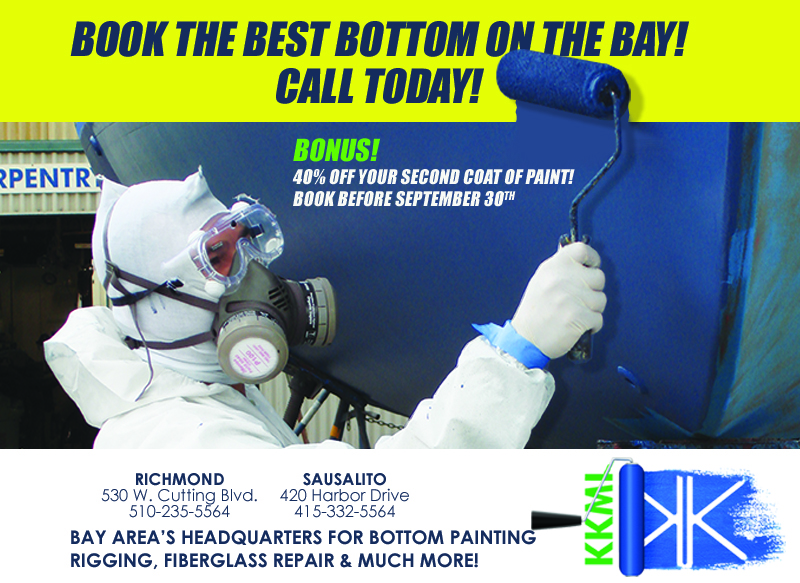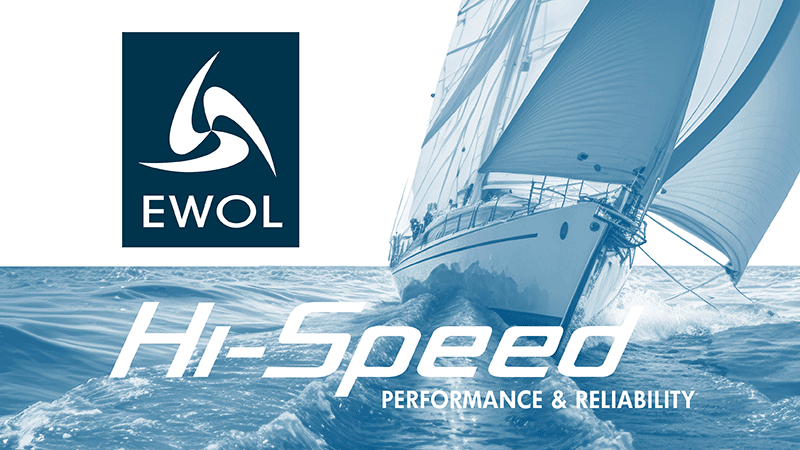
Faces in the Crowd at Rolex Big Boat Series
While Thursday’s racing at Rolex Big Boat Series involved summery San Francisco conditions, with breeze into the 20s and ebb chop, by Sunday the water had flattened and the wind mellowed into a downright comfortable range. The variety of conditions tested the crews’ abilities to adapt.
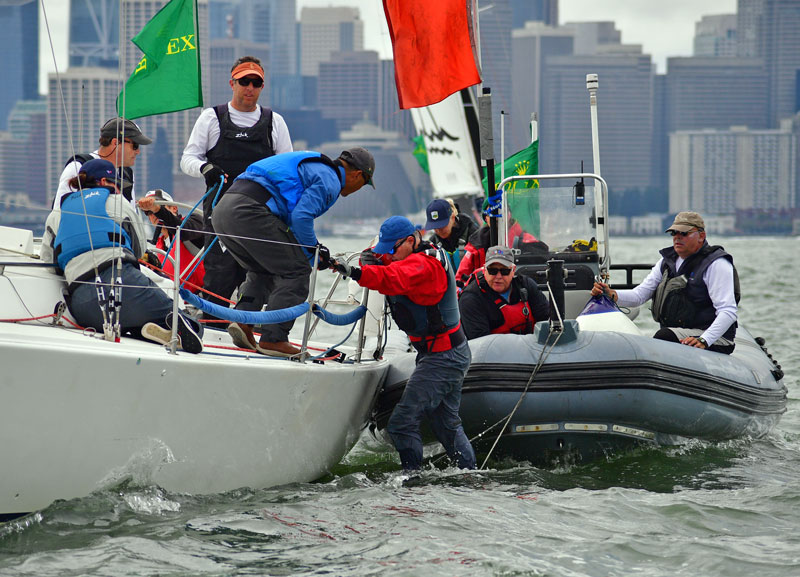
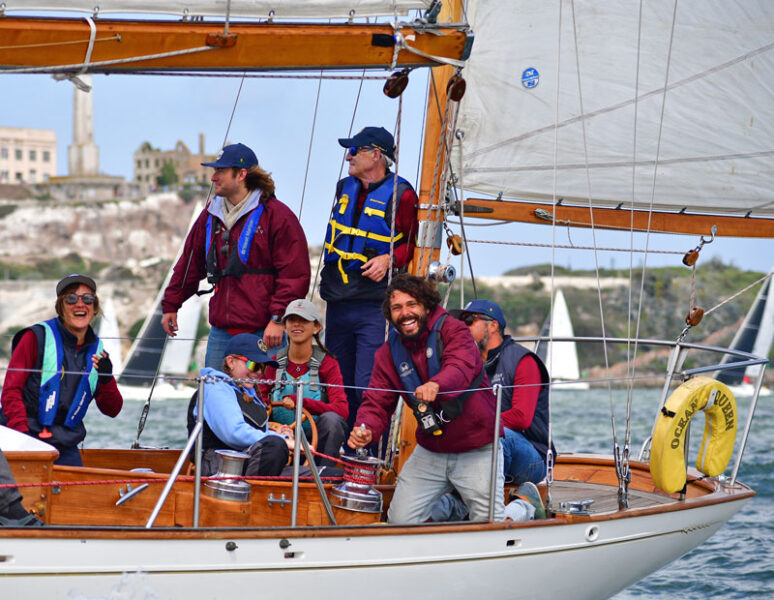
The Classics went into Sunday’s race with a three-way tie for points among Yucca, Mayan and Gesture. Gesture finished first, but the much smaller 8-Meter Yucca corrected out for the win, a repeat from last year’s win with Hank Easom at the helm.
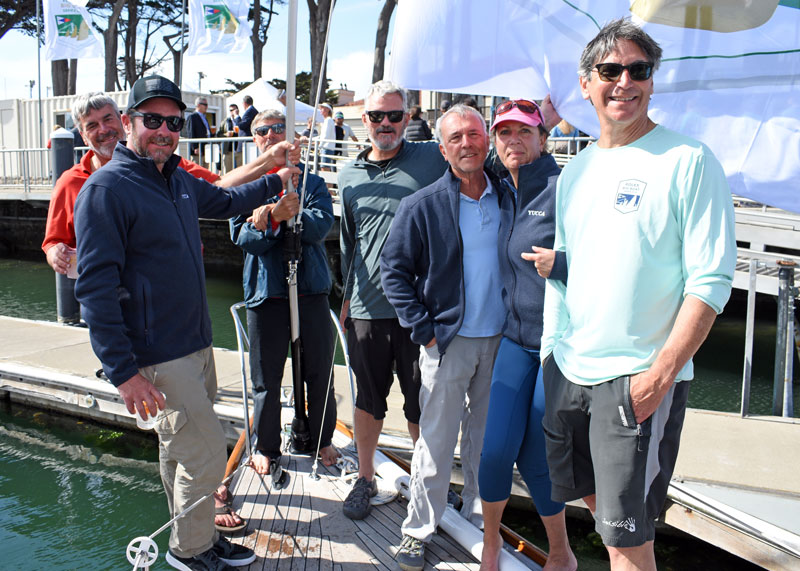
Sunday’s race for all divisions was a long Bay Tour. The ORC divisions ventured under the Golden Gate Bridge to a windward mark at Point Diablo. All finished in front of the hosting St. Francis Yacht Club, with every boat, no matter its position, cheered from the viewing stands upstairs.
At the Regatta Awards Party
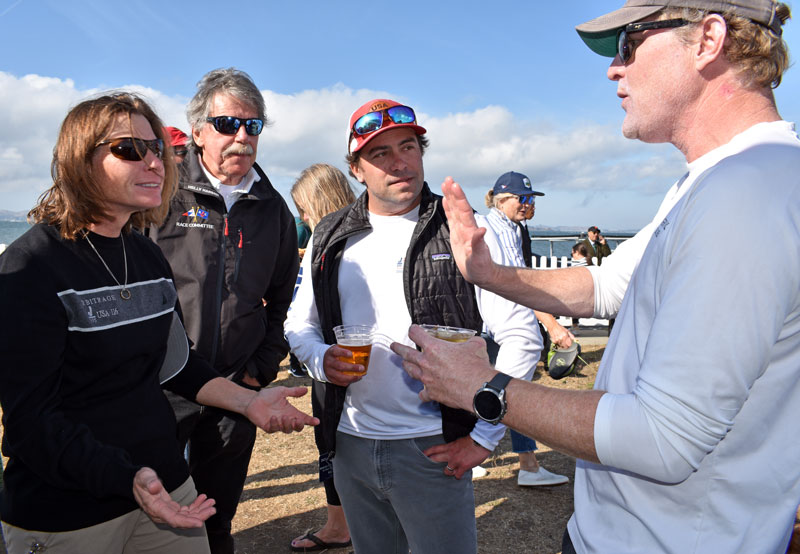
A late-afternoon awards celebration flowing with free champagne followed the day of champagne sailing. Much more cheering ensued.
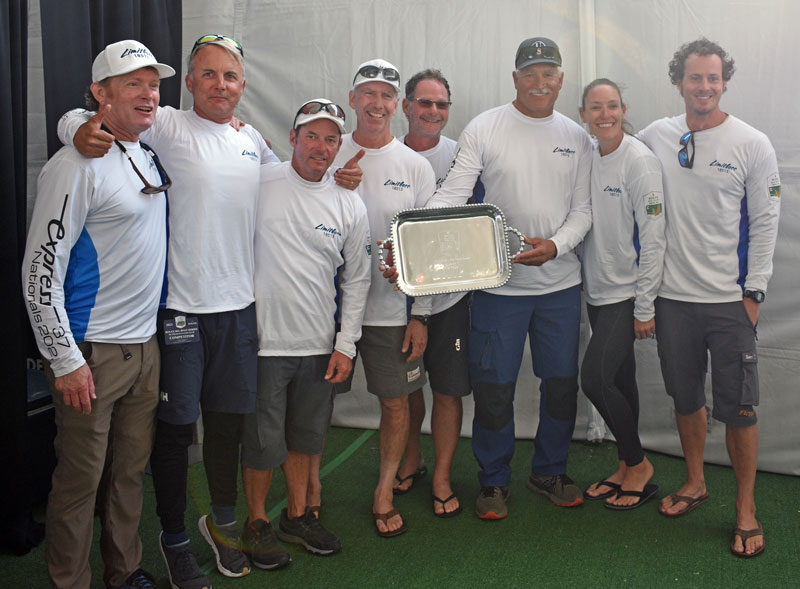
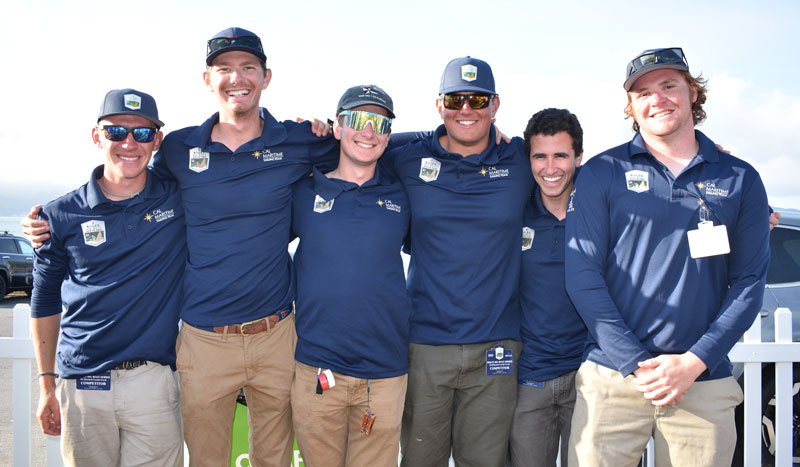
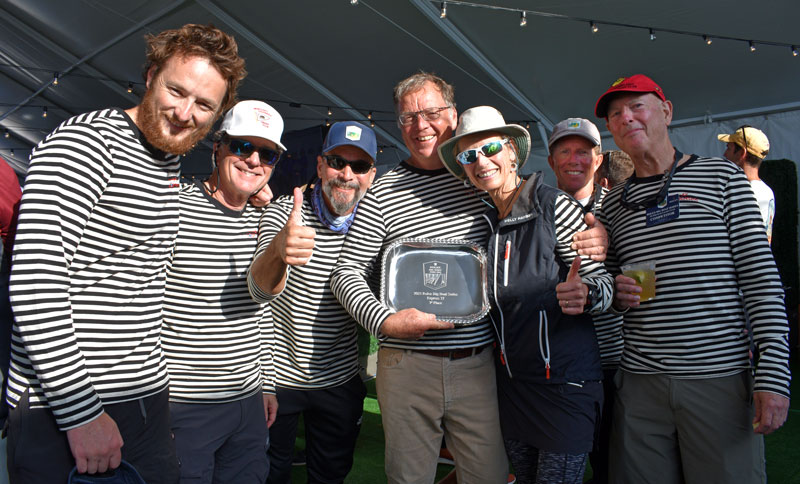
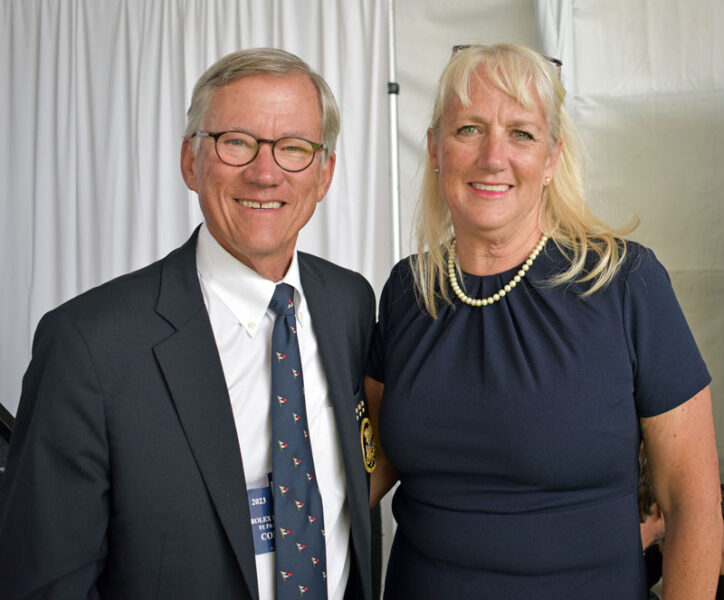
We’ll have a full race report feature in the October issue of Latitude 38. In the meantime, you can check out the full results and compare them to previous years at https://rolexbigboatseries.com/results.
Greet ‘Hokule’a’ at San Francisco Maritime Museum on Sept 24
The legendary Polynesian voyaging canoe Hōkūle‘a is returning to San Francisco next Sunday for a welcoming ceremony at San Francisco Maritime National Historical Park from 12–4 p.m. on September 24 in Aquatic Park Cove. She will be open for dockside tours.
The 61-ft wa’a (voyaging canoe) Hōkūle‘a has sailed the world since her maiden voyage in 1976. For perspective, the last Cal 40 was built in 1971, the first Moore 24 was built in 1974, and the first Express 27 was built in 1982! Overseen by the Polynesian Voyaging Society (PVS), Hōkūle‘a has been sailing a long time, and still continues her earth-saving mission. We wrote about the start of her 47,000-mile circumnavigation in 2014 when Hōkūle‘a left Hawaii to continue learning and sharing Polynesian navigating traditions and culture, and care for the earth.
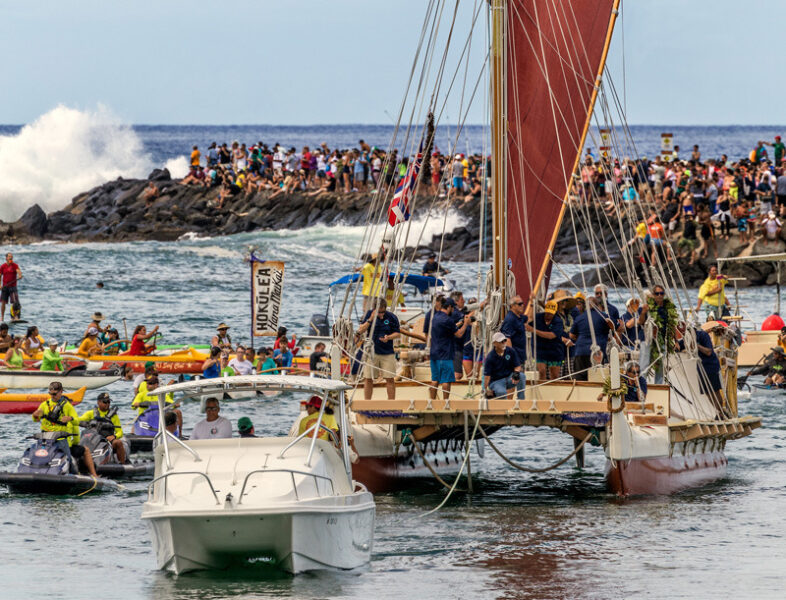
Her latest voyage, Moananuiākea, is Hōkūle‘a’s 15th major trip in her first 50 years. She is arriving on San Francisco Bay as she travels south after visiting Alaska and the Pacific Northwest. At the core of Hōkūle‘a’s creation was exploration to uncover, recover, and reclaim Polynesian maritime heritage.
The Moananuiākea voyage is guided by what PVS has learned on their worldwide voyages, evolving the mission to move from exploration and understanding to mālama, or caring, and kuleana, or taking responsibility. They hope the voyages will bring knowledge and understanding so we can all build a future good enough for our children and the future of island Earth.
The 43,000-mile, 47-month circumnavigation of the Pacific by traditional Polynesian voyaging canoes Hōkūle‘a and her sistership Hikianalia will include 400 crew visiting 36 countries and archipelagoes, nearly 100 indigenous territories, and 345 ports. Her visit to San Francisco is an opportunity for all sailors to connect with the culture of the original Pacific voyagers who settled the islands and atolls thousands of miles to our west.
An additional opportunity for families to connect and learn more from Hokule’a’s visit is a presentation by Polynesian navigator Nainoa Thompson, who has led the rediscovery and revival of the ancient Polynesian art of navigation. He will speak at the Herbst Theater on Tuesday, September 26, at 5:30 p.m., with tickets available here. Adults are $10, and youth 18 and under are free.
You can track Hōkūle‘a’s voyage here.
KKMI’s September Bottom Job Special
America’s Cup World Series: What a Difference a Slingsby Makes
As much as the America’s Cup World Series “event” tries to differentiate itself from SailGP, like a chameleon, it really is the same, isn’t it? Yes, the racing platforms between the foiling AC40 monohull and the F50 catamaran are different to the discerning eye, but conceptually, the boats, the players, the series and even the weather seem to be joined at the hip with a multitude of similarities.
Just look at this past weekend in Vilanova i la Geltrú, Catalonia, Spain. For the 37th America’s Cup first ACWS showcase, we were again held hostage by the weather conditions, and like multiple SailGP events, what would have been a “magical” final — in this case between American Magic and Emirates Team New Zealand — saw the wind fail to materialize.
At the start, the Kiwis copped a couple of penalties in the box, but after the gun, both boats were in “displacement” mode as they floated like turtles toward the first mark. In hindsight. the race committee should have taken the initiative to shorten the course on the remote possibility that one, if not both, AC40s could have popped up onto their foils and made it a race. Even a short one.
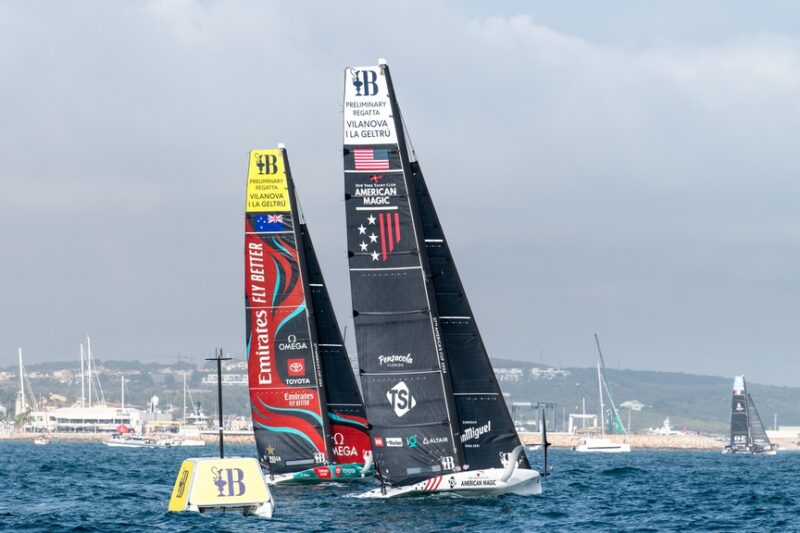
American Magic, which represents the New York Yacht Club, was awarded the win on accumulated points after dominating performances in the final two fleet races earlier in the day as the wind hovered slightly above, and many times below, the six-and-a-half-knot threshold.
“That was amazing; we put it together, and yeah, we got the result,” said Tom Slingsby, American Magic’s helmsman. “We sailed well; a couple of little mistakes, but when we made those mistakes it wasn’t in too critical a time, so we were able to get three good results and then lead into that final race and with the wind — it was nice knowing that you were leading going into that one.”
For American Magic, it was an amazing turnaround after the bitter disappointment of their “crash and burn” in the last America’s Cup in Auckland. Their performance certainly validates the signing of Tom Slingsby as a co-helmsman as he brings a culture of winning to the team with his “red-mist” intensity on and off the water.
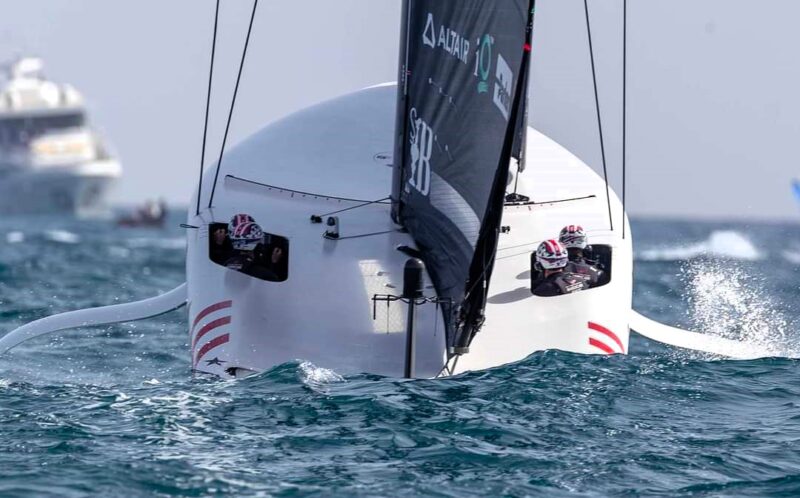
Slingsby knows how to mold a winner. Just look at his domination of SailGP, with three consecutive championships under his leadership. American Magic may well be on their way to an unprecedented fourth title with the “elimination” (for all practical purposes) of one of their chief competitors, Team New Zealand, after a catastrophic wingsail collapse in Saint-Tropez, France. The Kiwis are now forced to sit out potentially multiple SailGP events through no fault of their own.
Peter Burling and Blair Tuke from ETNZ put on a brave face this weekend in Spain after dealing with a week’s worth of adversity, with the announcement that “it will not be possible to transport and fit out the replacement wingsail for the New Zealand SailGP Team in time for the next event in Taranto, Italy.” On a SailGP note, Tuke said, “We’re working closely with the league to chart a path forward from here. That includes reviewing the rules for redress and compensatory points to ensure this forced non-participation does not further hinder our results this season.’
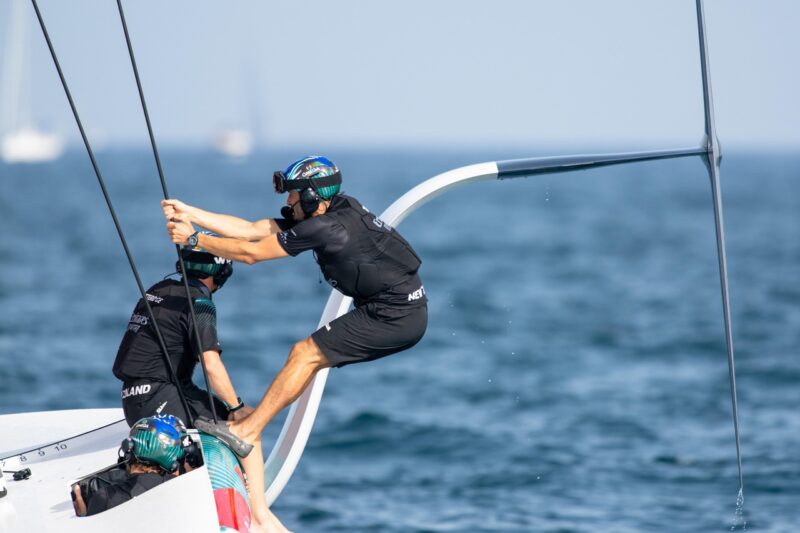
Now back to the America’s Cup ACWS:
“It would have been nice to have had a shot at them in that final race,” said Tuke. “For us, just a couple of unforced errors were the difference. All in all, I think we’ve got to be very proud with how we sailed; we set the bar in that light wind, which was really pleasing.”
“In these foiling boats, it’s a bit like surfing or any dynamic sport: You get a bit of a bump behind you and it’s easier to surf and accelerate,” said Riley Gibbs, American Magic’s wing trimmer from Long Beach. “It was easier to get up on port tack with the waves behind; starboard was into the waves, and despite the righty pressure, it was always false hope.”
“While the sailors rightfully claimed the limelight, this triumph was a testament to the collective endeavor of the entire NYYC American Magic team,” posted Graeme Harrison, American Magic’s communications director. “The unwavering support of principals Doug DeVos and Hap Fauth, steadfast even in the face of adversity, underscored their deep commitment to the sport and the team, as the team sets their sights on the ultimate goal, the 37th America’s Cup.”
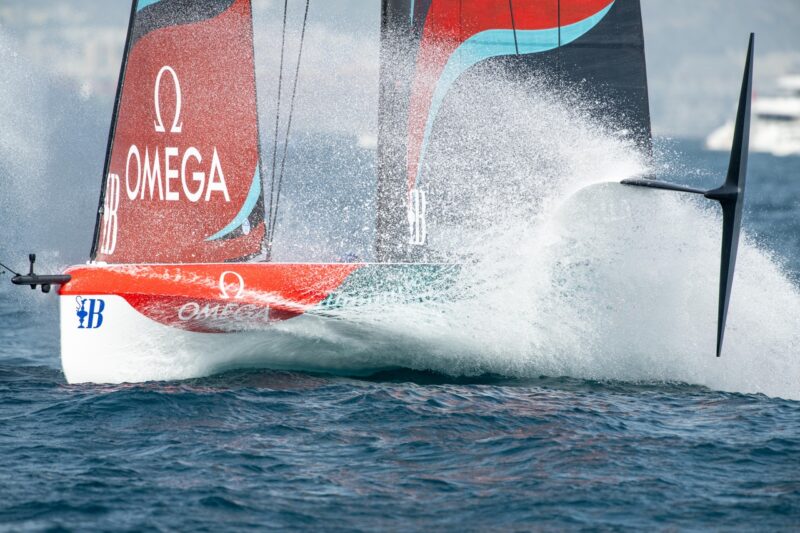
Unfortunately, American Magic will sit out the next round in Jeddah, Saudi Arabia, for obvious reasons; a hearing on potential penalties against the team was sent over to Challenger of Record INEOS Team Britannia and the Royal Yacht Squadron from the AC Arbitration Panel. But there really are no downsides for Magic other than missing out on a weekend of competition in a venue where the sailing conditions are a far cry from Barcelona’s, or a potential monetary fine.
After all, the ACWS events are non-points-paying races.
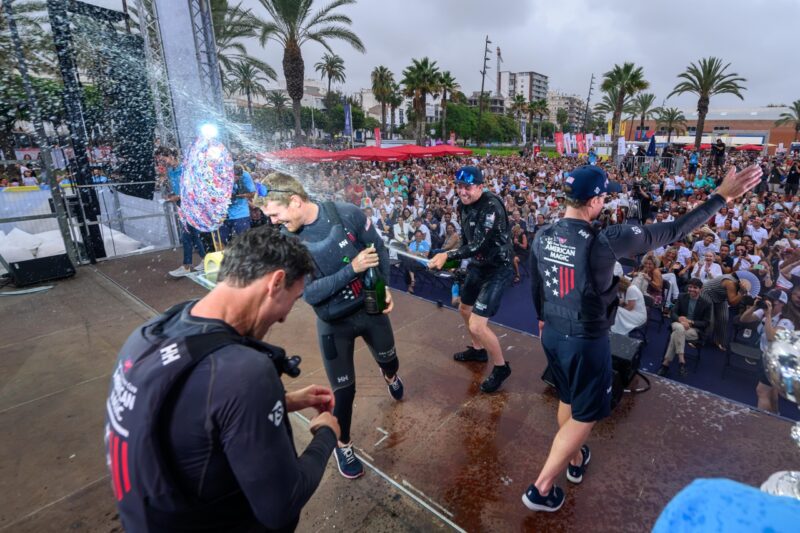
That said, I am sure that Slingsby and the other America’s Cup players in the SailGP “cloud” would rather have the New Zealanders in Italy, where they can keep an eye on them. Otherwise, the Kiwis might gain valuable training in Barcelona at a time of the year when the sailing conditions of the 37th America’s Cup finals and Match will be held.
The Enduring Unpopularity of the Proposed S.F. Marina Expansion
There is a certain give and take in municipal matters facing cities. Want to build a new train station, boardwalk or park? Some people will love it, and some will hate it. Public meetings will be filled with angry commentary, but usually some compromise, however small and perfunctory, is made. Projects might grudgingly be green-lighted, but at least some of the people are happy, some of the time.
That does not seem to be the case with the proposed San Francisco Marina Expansion.
As we reported this summer, after the City of San Francisco and Pacific Gas & Electric finally agreed to a nearly $190 million settlement in 2021, where the utility company was obliged to clean up toxic waste in East Harbor, PG&E has been working with the S.F. Recreation and Park Department on plans for a new public marina.
The results, which include an expanded West Harbor, seem to appeal to absolutely no one. The San Francisco Examiner reported that residents have been in an “uproar.” Nearly 2,750 people have signed petitions complaining that the new harbor would change the Marina Green area without cleaning it up.
“Opponents of the project argue that the new harbor would obstruct the Marina Green and dredge only 15% of the toxic waste in the process,” the Examiner said, adding that the original settlement included the cleanup as well as “designing and implementing a project to improve the Marina Small Craft Harbor, including replacing failing docks in the East Harbor and increasing recreational access to the waterfront for all.”
Instead of rehabilitating East Harbor, Rec and Parks has proposed moving some of the East Harbor’s boats “right in front of the Marina Green, blocking parkgoers’ currently unobstructed view of the water and the Golden Gate Bridge.”
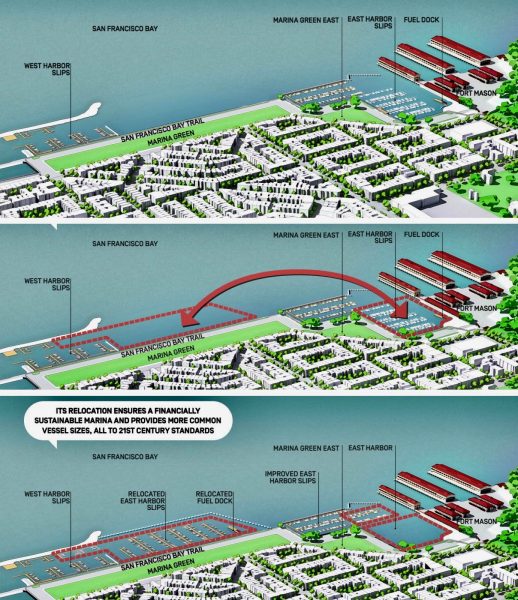
In the give and take on municipal matters, competing interests often emerge at odds with each other. (That is certainly shaping up to be the case with the proposed pedestrian bridge that would span the Oakland Estuary, where sailors and cyclists’ interests sit at opposite ends of the spectrum.) But in the case of San Francisco Marina, sailors and non-sailors alike are displeased with the idea of an expanded West Harbor. “The proposed breakwater will be terrible for junior sailing, J/22s, Knarrs and Folkboats and race committee operations,” said Bruce Stone, the vice president of the S.F. Marina Harbor Association, a nonprofit representing berth holders and users of San Francisco Marina. Many fleets do not use motors, and must tack upwind when returning from racing and practice. An expanded harbor would only increase that distance.
“[Rec and Parks] told us they are willing to relocate these boats to slips near the new harbor entrance, but that makes a longer walk to the clubs,” Stone said, warning that the proposed project could “kill those legacy fleets of the Bay that give the city character and color.” (There are also serious concerns about moving the fuel dock currently in Gashouse Cove to West Harbor, which is neither “feasible or responsible,” according to the dock’s owner.)
Rec and Parks is currently in the planning and community-engagement phase. “The next phase would be to begin project permitting, environmental reviews, and going over the design next year,” the Examiner said. “A detailed design is then expected in 2024, with a four-year construction period beginning in 2026.”
Catherine Stefani, who represents District 2 on the Board of Supervisors, has recused herself from the municipal debate about San Francisco Marina “under the advice of the city attorney,” according to the Examiner. “Her office told [us] that ‘she and her husband have a conflict of interest arising from their boat slip in the harbor.'”
A Marina resident and grassroots organizer told the Examiner that the project seemed like a “done deal” during the handful of meetings since March. (The Oakland pedestrian bridge is starting to feel the same way.)
A Rec and Parks spokesperson told the Examiner that, “Back-and-forth [is] part of the process and something that the department is quite familiar with. ‘We hear from people with very strong opinions for and against projects often. It’s all feedback we consider … in fact, we solicit it.'”
What’s your feedback? Please comment below, or email us here.
Additional reading and background on San Francisco Marina project here and here.

